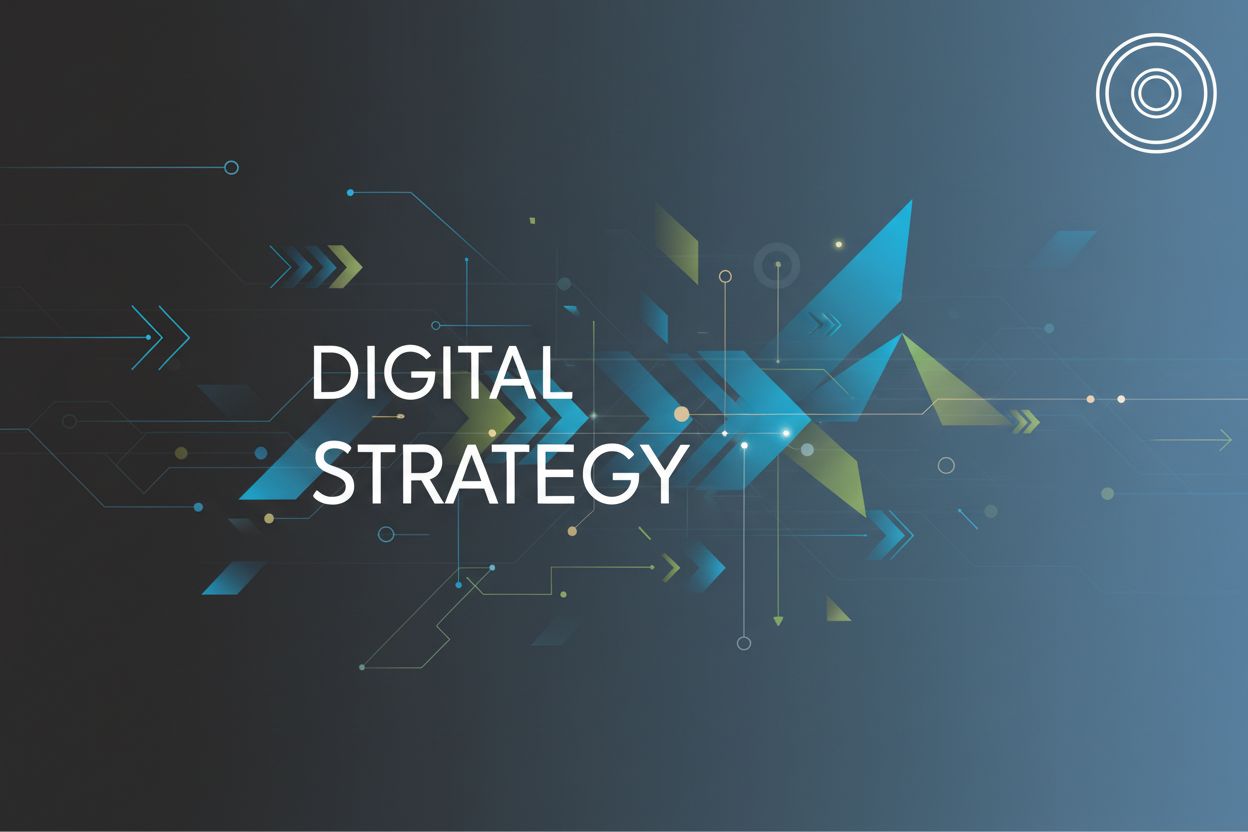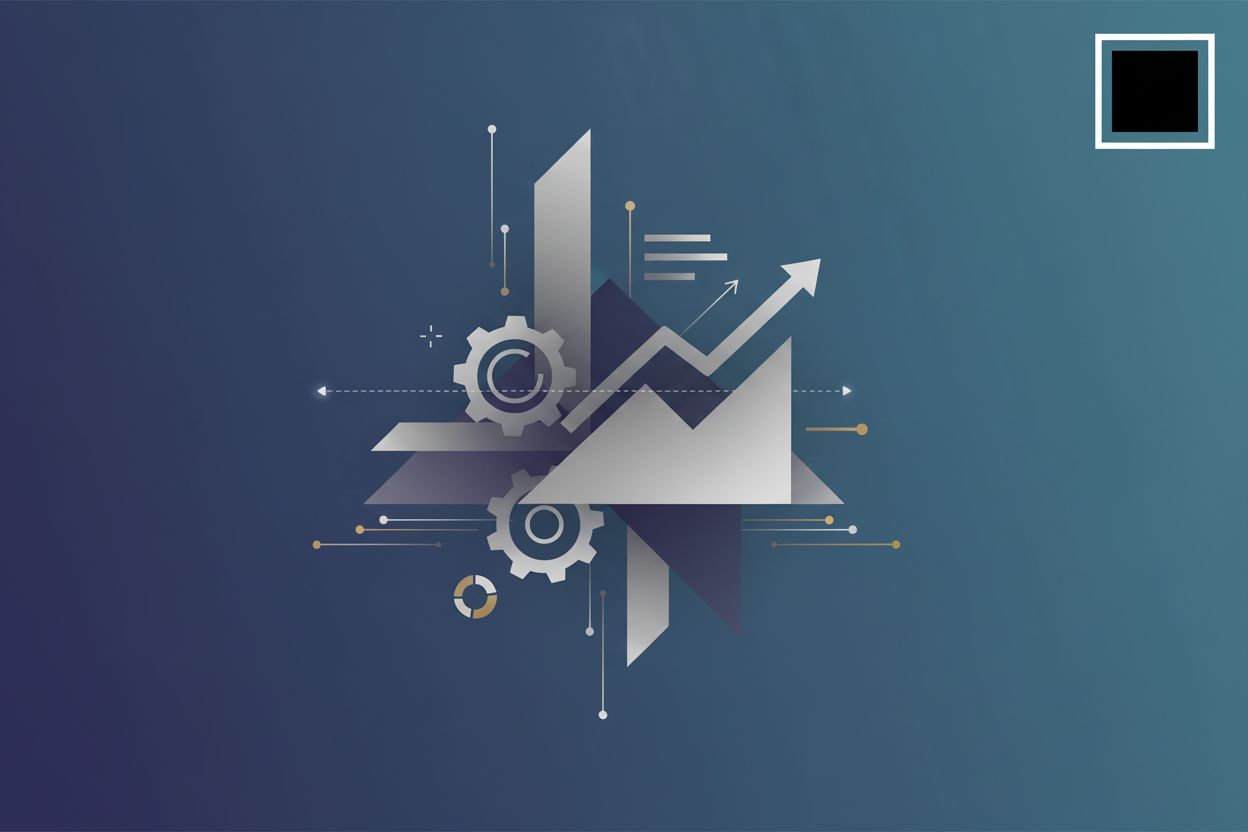10 Essential Digital Marketing Strategy Frameworks for Success
TL;DR
Why You Need a Digital Marketing Strategy Framework
Alright, so you're diving into why a **digital marketing strategy frameworks a must-have. Think of it like this: ever tried building furniture without the instructions? Yeah, that's your marketing without a framework—scattered and probably wobbly.
- It's like the roadmap. A framework guides your marketing activities. It helps you align your channels, those customer touchpoints, and even your goals. No more "throwing spaghetti at the wall" marketing!
- Adaptability is key. A framework helps you adapt to change. (Learn How Adaptation Is a Key to Embracing Change and Growth) "change is the only constant" and all that.
- Everything stays front and center. It keeps your goals front and center, ensuring all your efforts contribute to the overall objectives.
- Targeted content for the win. Delivers targeted content through the right channels, maximizing your impact.
Think about how a digital marketing framework can help a business launch a new online course. A solid framework ensures that potential students receive the right information about the course, through the correct channels (like targeted ads and email campaigns), which not only improves engagement but also drives sign-ups.
Basically, a framework gives you a structured game plan, and keeps your marketing relevant. Next up, we'll get into how these frameworks solve the problem of scattered marketing efforts.
Traditional Marketing Models: Tried and True
Alright, let's dive into some marketing frameworks that have been around the block – they’re not new, but they are definitely reliable! Think of them as the trusty tools in your toolbox, the ones you always go back to.
The 7Ps (Product, Price, Place, Promotion, People, Process, Physical Evidence) is like that comprehensive checklist you use before a big trip – making sure you haven't forgotten anything crucial.
- It's your go-to for covering all bases. It ensures nothing important gets missed during planning.
- Great for new product launches or when you need to re-evaluate existing offerings. It's like hitting the reset button to see what's still working.
- Think of "Place" in the digital age as your website, social media, or even that online marketplace you've been eyeing.
SWOT (Strengths, Weaknesses, Opportunities, Threats) is a simple, yet powerful tool. It's for understanding where your business stands in the grand scheme of things.
- It helps pinpoint what’s working, what’s not, and where you can grow or protect yourself. It’s like a business health check-up.
- Revisit your SWOT analysis quarterly. That way, you can stay on top of things as they change.
- Use tools like Google Trends or competitor analysis platforms to identify new opportunities and threats faster. It's like having a radar for market shifts.
STP (Segmentation, Targeting, Positioning) helps you zero in on your ideal audience. It's about getting laser-focused on who you're trying to reach.
- It involves dividing the market into smaller groups, picking the most valuable segments, and crafting tailored messages. Think of it as personalized marketing on steroids.
- Use tools like Google Analytics, HubSpot, or your CRM to identify patterns in user behavior. Data is your friend here.
- Refined data ensures your messaging resonates with the right audience. No more shouting into the void!
Porter's Five Forces analyzes industry attractiveness and competitive intensity. It's like knowing the rules of the game before you play.
- Considers: threat of new entrants, bargaining power of suppliers/buyers, threat of substitutes, competitive rivalry. It's a full scan of the playing field.
- Helps identify opportunities to enhance profitability and gain a competitive edge. Knowledge is power, after all.
Imagine a small, local bakery using the 7Ps. They focus on a unique product (Product), set competitive prices (Price), and uses local farmers' markets (Place). They use local ads (Promotion), train their staff (People), streamline the ordering process (Process), and focus on their packaging (Physical Evidence).
So, you've got the classics down. What now? Let's move into modern marketing frameworks and see how they stack up!
Modern Marketing Frameworks: Adapting to the Digital Age
Alright, so, you're probably wondering how to keep up with all these changes in marketing, right? It can feel like trying to catch smoke sometimes. But don’t worry, we’re gonna break down some modern frameworks that’ll help you stay ahead.
RACE—Reach, Act, Convert, and Engage—is like your GPS for the customer journey. It’s more than just a set of steps; it's a way to think about how people interact with your brand from the first touch to becoming a loyal fan. As DesignRush notes, RACE planning helps manage the entire customer experience.
- Reach: Getting the word out there. It’s about using ads, social media, and content to grab attention.
- Act: This is where you get people involved. Think newsletter sign-ups or clicking on links.
- Convert: Turning that engagement into sales. Irresistible offers and clear calls to action are key.
- Engage: Building relationships to keep customers coming back.
You need to track those kpis at each stage too. Impressions and click-through rates for Reach; time on page for Act; conversion rates for Convert; and for Engage, think about customer lifetime value, repeat purchase rates, or even social media engagement metrics like comments and shares. It's a real lifesaver for e-commerce.
AARRR—Acquisition, Activation, Retention, Referral, Revenue—is the framework for startups, according to DesignRush. It's about breaking the customer lifecycle down into measurable chunks, so you can track progress and tweak your approach along the way.
- Acquisition: How are you getting new users? Ads, SEO, social media?
- Activation: Are users having a good first experience? Signing up, making a purchase? If users are dropping off here, maybe you need to simplify your sign-up forms or offer a clearer onboarding tutorial.
- Retention: Are customers coming back for more? If retention is low, consider loyalty programs or personalized follow-up emails.
- Referral: Are they spreading the word? If not, maybe your referral program isn't enticing enough or your product/service isn't share-worthy.
- Revenue: How much value are you getting from each customer?
It's really good for scaling a saas business, too.
The Flywheel Model is all about building those lasting customer relationships. Instead of a one-way funnel, it's a cycle where happy customers become brand advocates, and that's what fuels continuous growth.
- Attract: Use helpful content and strong seo to bring in customers.
- Engage: Build connections through personalized experiences.
- Delight: Exceed expectations to earn loyalty and referrals.
See, it's all about removing friction at every stage. Simplify your checkout, improve customer service response times, and make your website user-friendly.
The Hook Model, developed by Nir Eyal, is about creating habit-forming products. It's designed to understand audience behavior, so you can create experiences that keep people coming back.
- Trigger: What gets your audience to take action? A notification? A social media post?
- Action: What behavior do you want them to take? Opening an app? Clicking a link?
- Variable Reward: This is the surprise element that keeps them engaged.
- Investment: What commitment do they make that makes it harder to leave?
Automation is great, but don't forget the human touch. Tools like Braze can automate triggers and notifications, but personalization makes it meaningful, you know?
So, that’s a wrap—a quick peek at some modern frameworks to keep your marketing sharp. Let's explore some more frameworks to help you level up your digital strategy.
Advanced Frameworks for Complex Strategies
Alright, so, you're thinking about leveling up your digital marketing game? It's not just about knowing the latest trends; it's about knowing how to use them, right? Let's look at some frameworks to help you with that.
Ever wonder how some brands just seem to have a tribe of loyal followers? Forrester's 5 Is is a framework that focuses on building thriving online communities. It emphasizes:
- Involvement: Encouraging customers to engage with your brand through reviews, feedback, or interactive campaigns. Think of it as getting them to raise their hand and say, "I'm here!"
- Interaction: Being there when customers need you – whether it's quick responses via live chat or helpful FAQs. It's about showing you're listening and ready to help.
- Intimacy: Building trust by recommending products that fit their unique preferences and past purchases. Like a personal shopper who gets you.
- Influence: Highlighting user-generated content like reviews and testimonials to inspire confidence. It's not just you saying you're great; it's everyone else too.
- Individualization: Personalizing offers and deals to match each customer’s behavior and browsing history. Making them feel seen and valued.
McKinsey's 7S framework helps ensure all business components work together seamlessly. It evaluates:
- Strategy
- Structure
- Systems
- Shared Values
- Skills
- Style
- Staff
Don’t treat the elements in isolation – they’re all interconnected. Adjusting your strategy might mean updating your structure or investing in new systems. For example, if you decide to shift your strategy towards a more customer-centric approach, you'll likely need to update your internal systems to support better customer service, train your staff on new communication protocols, and potentially even adjust your organizational structure to empower customer-facing teams. It's a holistic view; changing one piece ripples through the others.
These frameworks aren't just theories; they're tools to help you build a stronger, more connected brand. Let's look at how to choose the right one for your needs.
Choosing the Right Framework: A Step-by-Step Guide
Alright, so you've got all these digital marketing strategy frameworks—how do you actually pick the right one? It's kinda like trying to find the perfect pair of jeans, right?
First things first: What's your main focus? Is it snagging new leads, keeping the customers you already have, or just getting your brand out there?
- For killer customer retention, the Marketing Funnel is your friend. It helps keep customers engaged at every stage.
- And if you're a startup trying to scale up fast, give Pirate Metrics (which is the AARRR framework we talked about earlier) a shot. It breaks down growth into easy steps.
Think of it this way: you wouldn't use a hammer to screw in a nail, would you? So choose a framework that fits what you're trying to do.
Not all frameworks are created equal—some just vibe better with certain industries, you know?
- If you're in eCommerce, RACE Planning is where it's at. It's awesome for managing campaigns and boosting those all-important conversions because it's so focused on the customer journey from initial awareness to advocacy, which is crucial for online sales.
- Got a subscription service or SaaS gig? Then the Flywheel Model is your soulmate, focusing on those long-term customer relationships that keep the cash flowing. This works well because SaaS and subscription models rely heavily on customer lifetime value and reducing churn, which is exactly what the Flywheel emphasizes.
Okay, let's be real—what's your team looking like? Do you have a massive budget or are you bootstrapping?
- Got a big team? Then McKinsey’s 7S might be for you. It gives you detailed guidance to align all the moving parts, like a well-oiled machine.
- Starting out small? SWOT Analysis or Pirate Metrics can give you simplicity without feeling overwhelmed.
So, choose a framework that works with what you've got, not against it.
Conclusion: Putting It All Together
Alright, so, you've been reading about all these frameworks... now what? It's time to wrap things up so you can get to work!
- Digital marketing doesn't have to be some crazy guessing game, you know?
- These frameworks, they help you zero in on what's important. Stronger campaigns? Check. Connecting with people? Double check. Real growth? Triple check.
Choosing a framework, though, is only the start of it. I mean, you actually gotta use it, right? Maybe think about working with someone who knows their stuff to really nail it.




